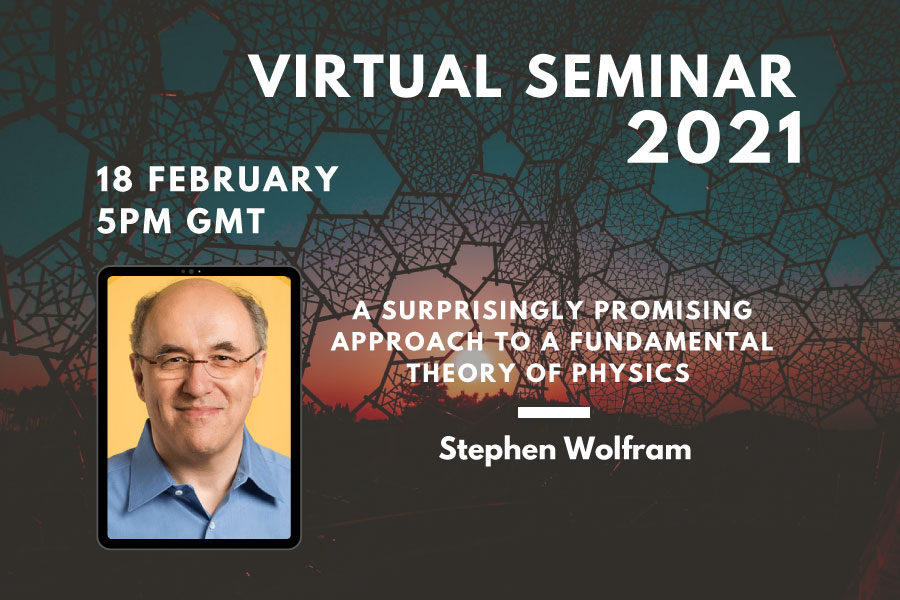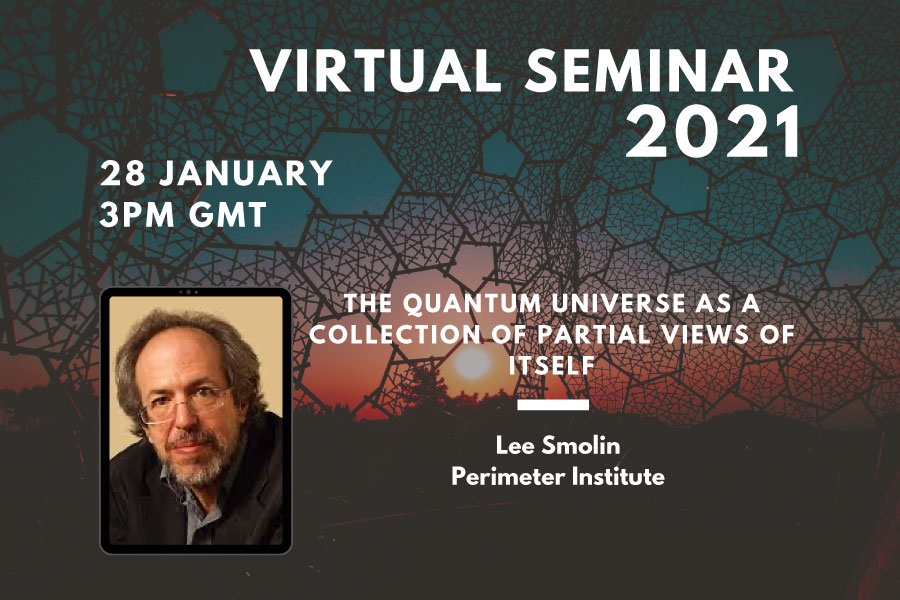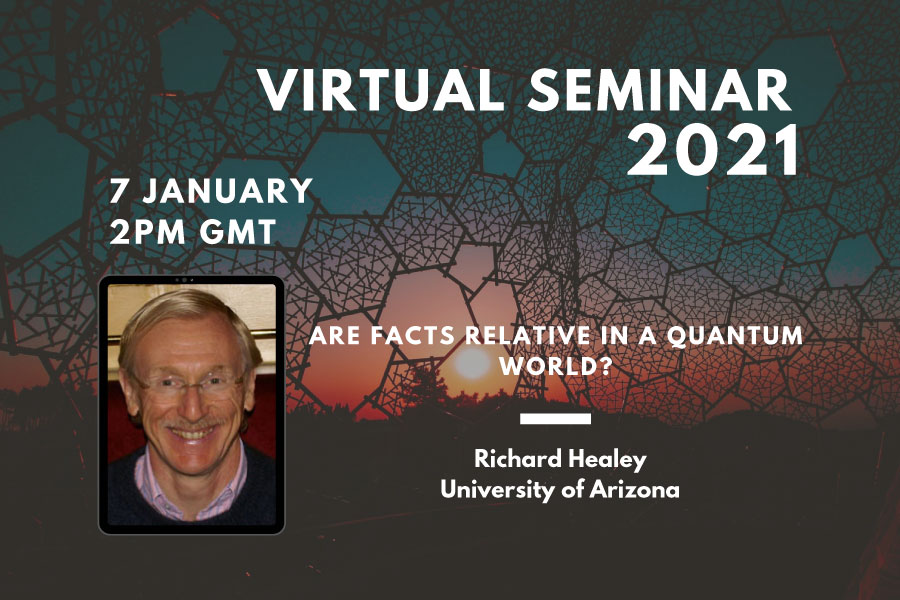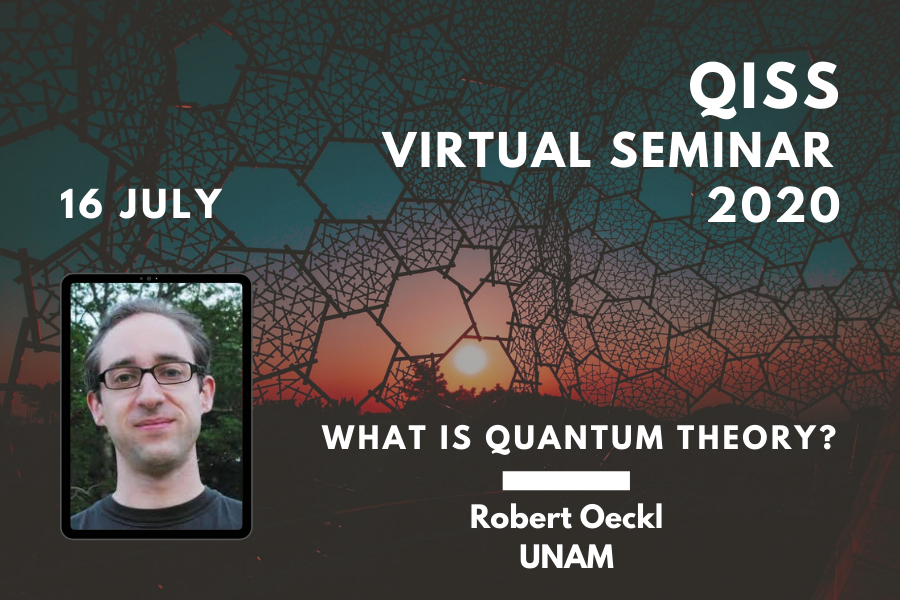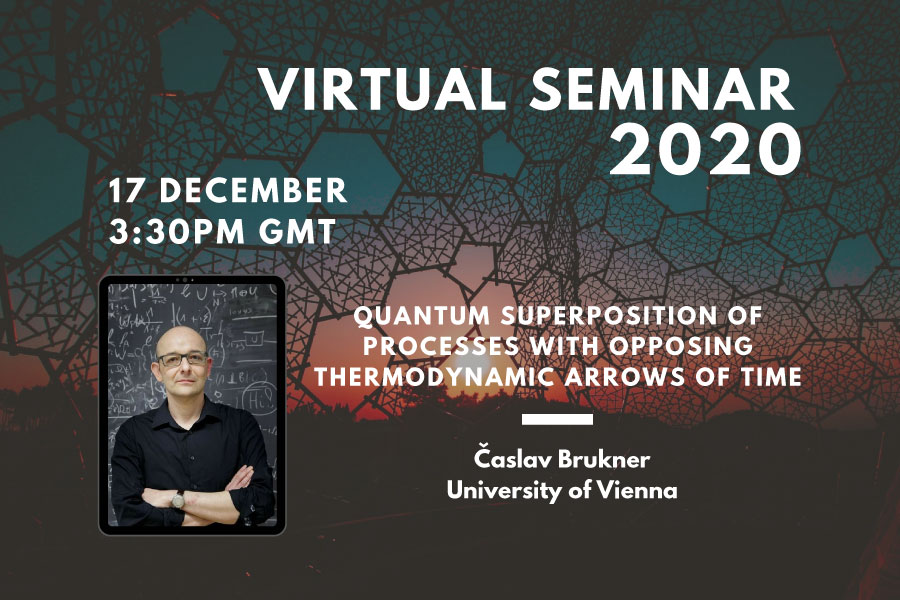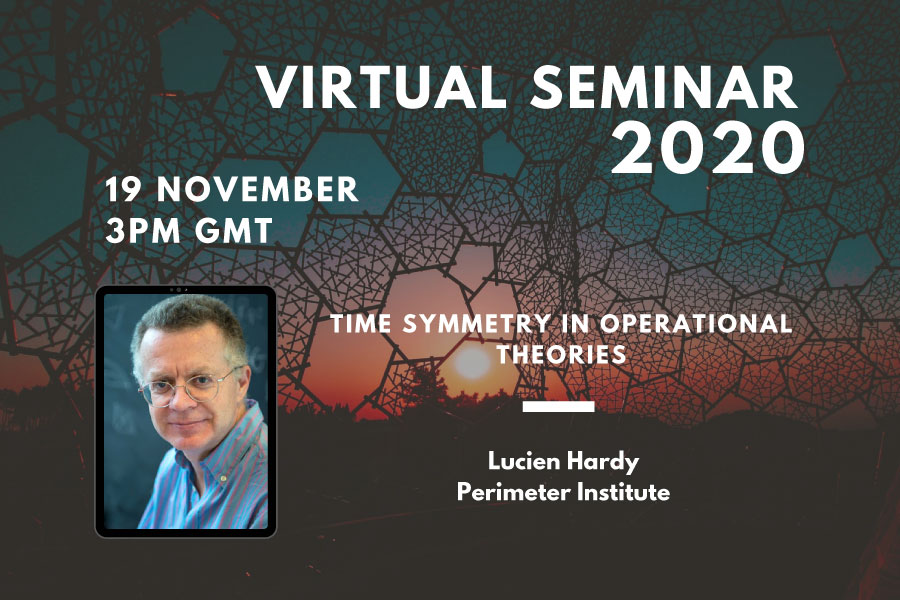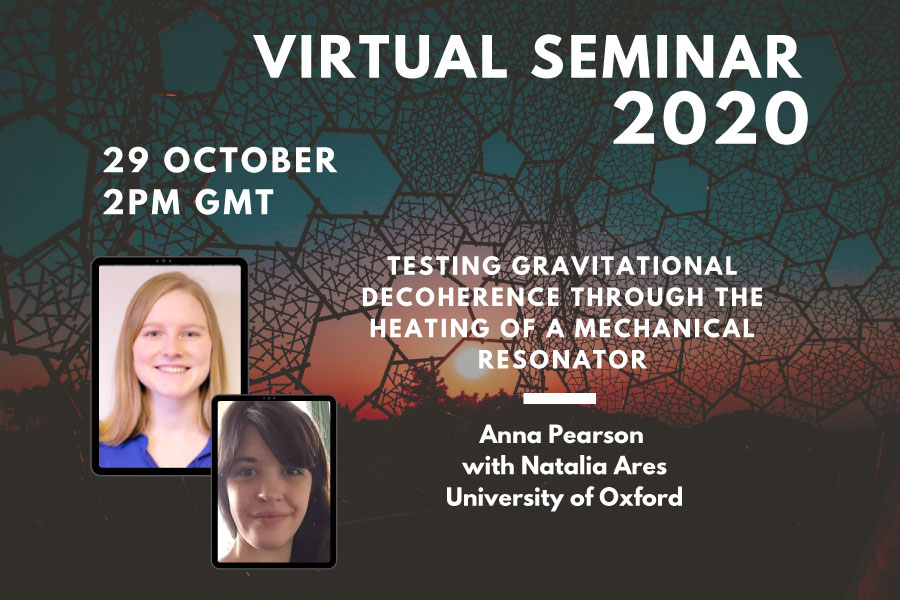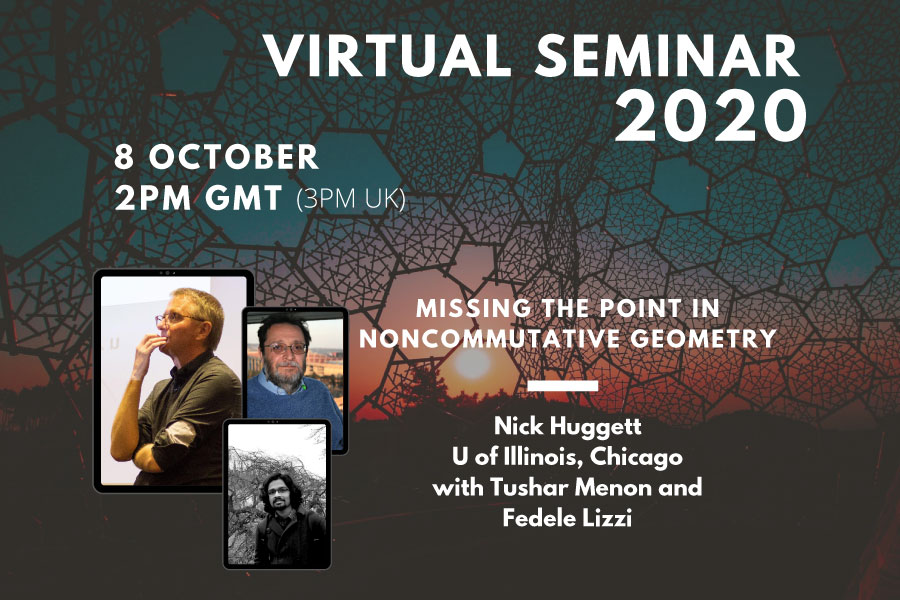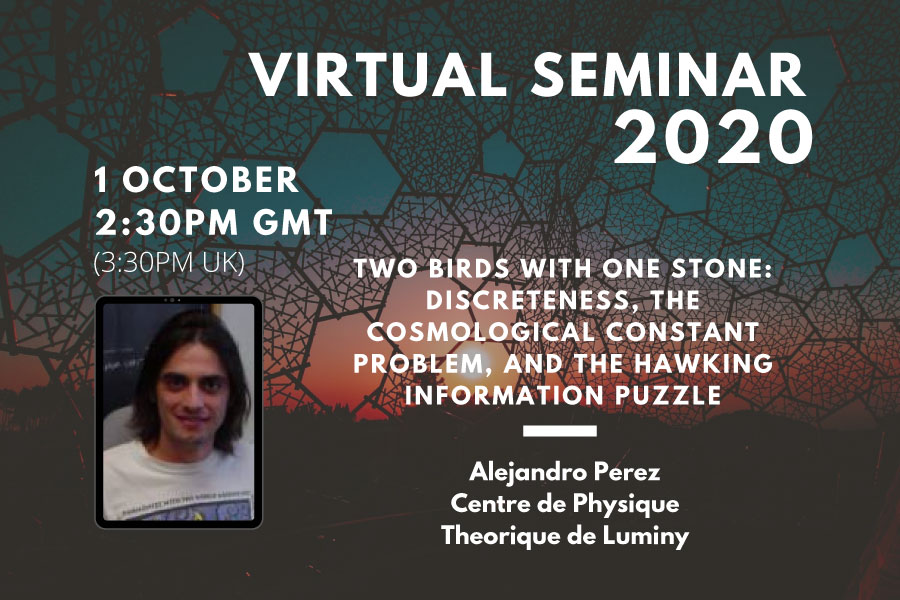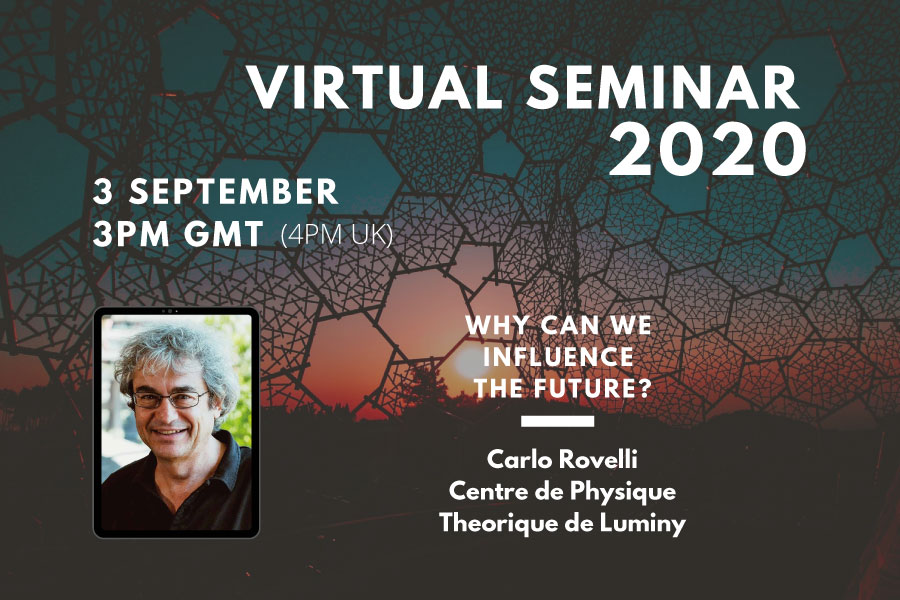Virtual Seminars
Lee Smolin
Perimeter Institute
The quantum universe as a collection of partial views of itself
Abstract: I describe a recent proposal for a simultaneous completion of quantum mechanics and general relativity, called the causal theory of views (CTV). Among its postulates are that time, in the sense of causal relations amongst events, is fundamental, and that space is emergent-along with everything that depends on space, such as distances, derivatives, fields, locality, non-locality etc. Also assumed real and fundamental are energy and momentum. Each event than has a view of the rest of the universe, which is made by the energy and momentum transferred to it by its causal precedents. To define dynamics we must introduce a measure of distance on the space of views. The idea is that differences of views substitutes for spacial distances and derivatives. The potential energy is then postulated to be a measure of the total diversity of views in the universe, called the variety. The kinetic energy is then related to the variety’s rate of change under causal evolution. The dynamics is defined by a sum over causal histories, from which space and spacetime emerge at the semiclassical approximation. N body nonrelativistic quantum mechanics is also derived, due to the variety reducing to Bohm’s quantum potential. Further steps are sketched. Based on papers: arXiv:1712.04799. with Marina Cortes: arXiv:1307.6167, arXiv:1407.0032, arXiv:1703.09696 , arXiv:1902.05082,
arXiv:1104.2822, arXiv:1506.02938, arXiv:1205.3707
Richard Healey
University of Arizona
Are facts relative in a quantum wold?
Abstract: Recent arguments purport to show that if quantum theory is universally applicable then there is no objective fact about the outcome of a quantum measurement in certain extended Wigner’s friend Gedankenexperimenten. This calls for an examination of the notions of fact and objectivity. If quantum theory is universally applicable then the facts about the physical world include a fact about each quantum measurement outcome. I will argue that these and other physical facts lack an ideal kind of objectivity but their more modest objectivity is all that science needs.
Robert Oeckl
Universidad Nacional Autónoma de México
What is Quantum Theory?
Abstract: The invention of quantum theory in the 1920s represented a paradigm shift in our approach to describing the natural world. The focus on the object as a primitive shifted to the observation as a primitive. At the time, the first applications of interest came with a classical description in the language of Hamiltonian evolution, canonical variables and states. Staying close to this particular language lead to the development of the quantum formalism of Hilbert spaces, operators, Schrödinger equation and Born rule. Somewhat unfortunately, this standard formulation has come to dominate our understanding of what quantum theory is. While it was successfully employed in describing the micro-structure of matter and its relevant interactions, describing the dynamics of spacetime itself is outside of its scope. With the present talk I want to promote the idea that quantum theory is much more general than this standard formulation. I aim to clarify the essence of the paradigm shift that lies at the heart of the transition from classical to quantum theory. On this basis I then review the derivation from first principles of a more fundamental formulation of quantum theory, the positive formalism, and the recovery of the standard formulation as a special case.
Časlav Brukner
University of Vienna
Quantum superposition of processes with opposing thermodynamic arrows of time
Abstract: Fundamental laws of physics are generally time-symmetric. The directionality of time is then often explained with the thermodynamic arrow of time: the entropy of an isolated system increases during a process, and it is constant only if the process is reversible. In this talk, I will consider a quantum superposition between two processes with opposing thermodynamic arrows of time. How is a definite arrow of time established for such a superposition? I will show that a quantum measurement of entropy change (for values larger than the thermal fluctuations) can be accountable for this. In particular, while the individual result of the measurement is random, once the value of the entropy variation has been observed, the system continues its evolution according to a definite arrow of time. Furthermore, for entropy variations lower than (or of the order of) the thermal fluctuations, interference effects can cause entropy changes describing more or less (ir)reversible processes than either of the two constituents, or any classical mixture therefrom.
Lucien Hardy
Perimeter Institute
A Time Symmetry in Operational Theories
Abstract: The standard framework for probabilistic operational theories is time asymmetric. The fact that future choices cannot affect the probability of earlier outcomes is mathematised by the statement that the deterministic effect is unique. However, deterministic preparations are not unique and, correspondingly, earlier choices can influence later probabilities of outcomes. This time asymmetry is rather strange because abstract probability theory knows nothing of time. Furthermore, the Schoedinger equation is time symmetric and, additionally, measurement situations can be treated by very simple models (without invoking the Second Law at all). In this talk I will outline how it is possible to give a time symmetric treatment of operational probabilistic theories with particular application to Quantum Theory. In so doing, we will see that the usual formulation of operational quantum theory is, in some sense, missing half of the picture.
Anna Pearson with Natalia Ares
Oxford University
Testing gravitational decoherence through the heating of a mechanical resonator
Abstract: The theory of classical channel gravity models gravitational interactions as classical measurement channels. These channels are a source of decoherence even if the results of the measurements are never recorded in a lab and thus the gravitational interaction can be thought of as having the same effect as an observer. This leads to two potentially observable effects – decoherence in the position basis and a density dependent heating effect. We have set up an experiment to test for the latter, using a cavity optomechanical setup at cryogenic temperatures to measure the mode heating of a silicon nitride membrane.
Nick Huggett, with Tushar Menon and Fedele Lizzi
University of Illinois
Missing the Point in Noncommutative Geometry
Abstract: Noncommutative geometries generalize standard smooth geometries, parametrizing the noncommutativity of dimensions with a fundamental quantity with the dimensions of area. The question arises then of whether the concept of a region smaller than the scale makes sense in such a theory. We argue that it does not, in two interrelated ways. In the context of Connes’ spectral triple approach, we show that arbitrarily small regions are not definable in the formal sense. While in the scalar field Moyal-Weyl approach, we show that they cannot be given an operational definition. We conclude that points do not exist, and that continuous spacetime is an appearance, in such geometries.
Carlo Rovelli
Center for Theoretical Physics at Aix-Marseille University
Why can we influence the future?
Abstract: The two main components of the QISS community –quantum information and quantum gravity– have opposite views on the arrow of time. This is generally taken as foundational in the dominant instrumentalist approach of the fist; while is often considered to be only a contingent aspect of the macroworld in the second. I show how to reconcile the two perspectives. This requires two steps: a careful analysis of the arrow of implication; and an understanding of the physical source of the time orientation of the agent. A number of papers have recently addressed these issues offering a compelling solution to the apparent disagreement.
